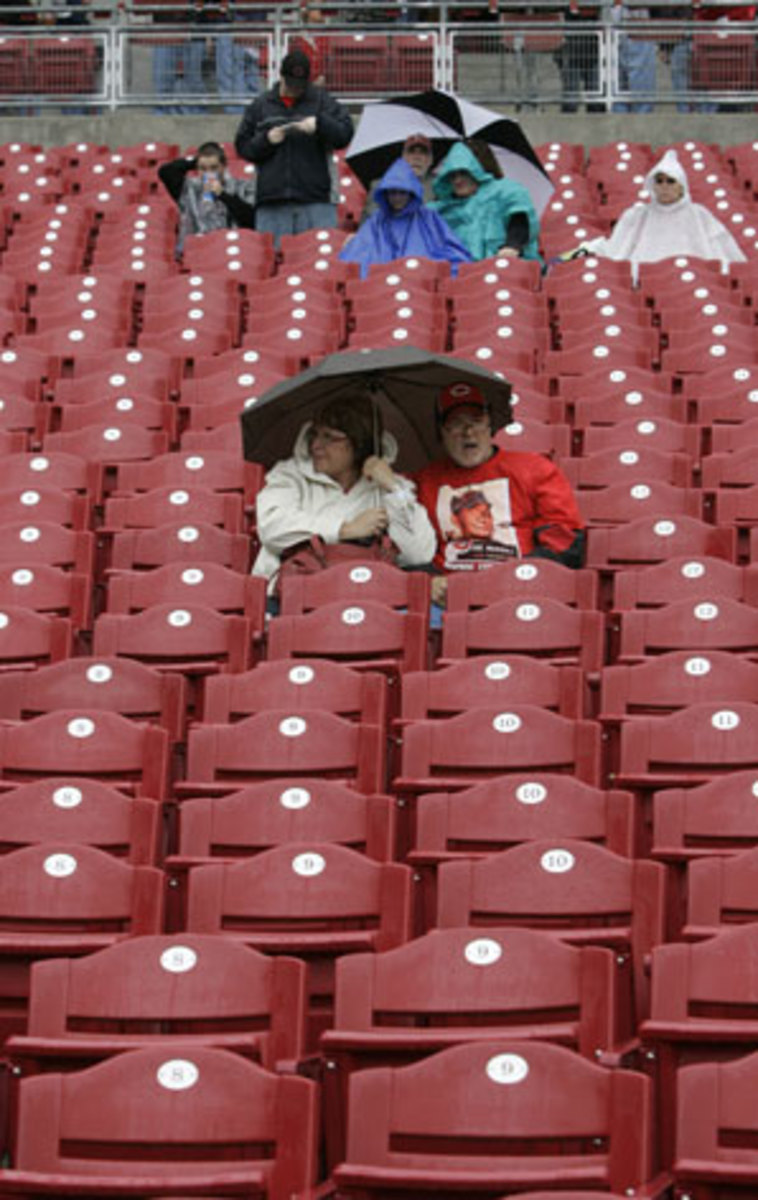World Series is fun for big markets, just a show for others
The World Series works best as a concept in Cincinnati and places like it. It's a TV show. When I was in grade school, my teachers would stop instructing long division long enough to let us watch the latest Apollo launch on the black-and-white Philco. We knew we'd probably never get to visit outer space, but it was cool to see the blast-offs. That's what the World Series is like in Cincinnati in the fall of 2009. Strictly vicarious.
We have a major league team in Cincinnati, mainly because the Phillies, Mets and Dodgers need somebody to play. The Reds do what they can, which is never enough, because unless you are perfect or the Minnesota Twins, you can't pay enough to keep enough good players to win more than once in forever.
Baseball praises its revenue sharing, believes it's working quite well. And it is, if you live in Boston, New York, Chicago, L.A. and Philly. Elsewhere, it's strictly hand to mouth.
Commissioner Bud Selig and his acolytes will point to the wide variety of MLB mutts that have crashed the postseason in recent years. They will wheel out the Twins, poster children for Have Not hopes. They will say this, as Selig did to SI.com's Jon Heyman, in late September: "I still think the basic tenets we have in place will lead to the best competitive balance we've ever had.''
Too bad Selig couldn't have taken in a few games of the final series of the year in Cincinnati. The Reds hosted the Pittsburgh Pirates, in front of a few thousand friends and relatives. The two teams have combined for 26 consecutive losing seasons, and counting. Let us all pause to admire the competitive balance.
Here's why baseball's economy is seriously out of whack, and needs a drastic tweak in the way it does business: Pittsburgh has had zero winning seasons in the last 17, a record for futility. Cincinnati has 2 in 14. Kansas City, 1 in 15; Tampa, 2 in 12, Milwaukee, 2 in 17; Montreal/Washington, 3 in 15.
That adds up to 10 winning years out of a possible 90 for six of the lowest-paying clubs in baseball. That means 20 percent of your members have an 11 percent chance of even marginal success. That kills hope. When hope disappears, can your fan base be far behind?
As a fan, who wants to enter a season thinking, "If everything goes right and nobody blows an elbow, we could finish .500?''
"It is not a good business model,'' Reds owner Bob Castellini has said. It's a self-serving observation, obviously. It's accurate, too, at least in places like Cincinnati. The team in Washington should rename itself the Generals and barnstorm against A-Rod and the fellas.
Selig likes it the way it is. Why wouldn't he? When the Yankees or the Red Sox are in the World Series, TV ratings are far higher than when they aren't. Who wants to watch Tampa and Milwaukee in October?
Baseball keeps just enough teams on the dole that it appears to care about its flyover clubs. The fact that those teams can't make mistakes on players and can't keep their best talent is glossed over every time a Milwaukee or a Colorado plays more than 162 times.
After watching Cliff Lee and CC Sabathia make two starts apiece in the first five games of this year's World Series, how can Cleveland fans feel anything more than jobbed by baseball's "competitive balance?'' The only wayA-Rod plays in Cincinnati is if the city gets the 2013 All-Star Game.
Could the Reds and teams like them be run more efficiently? Sure. In 1992, the Yankees drafted Derek Jeter with the sixth pick of the first round. Picking fifth, the Reds took, um, Chad Mottola. But you can be smart and still struggle. Is Billy Beane less of a genius than he was a decade ago? Or did teams like the Red Sox merely imitate his style, armed with taller piles of cash?
The Yankees have missed the postseason exactly once since 1993. Apparently, their front office has been nothing but wise since then. I'm sure Carl Pavano thinks they're brilliant.
Care about the Cincinnati Reds or don't. Fact is, if you follow the sport -- and are somewhere in the vast part of America that doesn't care about the Red Sox, Yankees and Mets -- you need to be concerned about a competitive imbalance that allows one team to spend $200 million on players and another in the same business to spend $40 million.
I've even suggested to the Reds' chief operating officer that the team spend whatever mattress-money it can spare on marketing, advertising and group sales. Don't buy players; buy fireworks, to blow up after weekend night games. Invest in scouting, Latin America and postgame concerts.
Word to the mini-market wise: Bobbleheads.
Make baseball a night out, in other words. The Reds' payroll was a modest $74 million last year. Next year, it will be less. If you're not going to spend $100 million on players, there is no point in going from the low-70s to, say, the mid-80s. Each of baseball's four postseason semifinalists this year had payrolls of at least $100 million.
Hope springs infernal in Cincinnati. The Yankees let us eat cake. We're supposed to shut up and eat. And watch the World Series on TV.






